Occupation Writer Books Cantilene occitane: roman Role Writer | Name Pierre Gamarra Nationality French | |
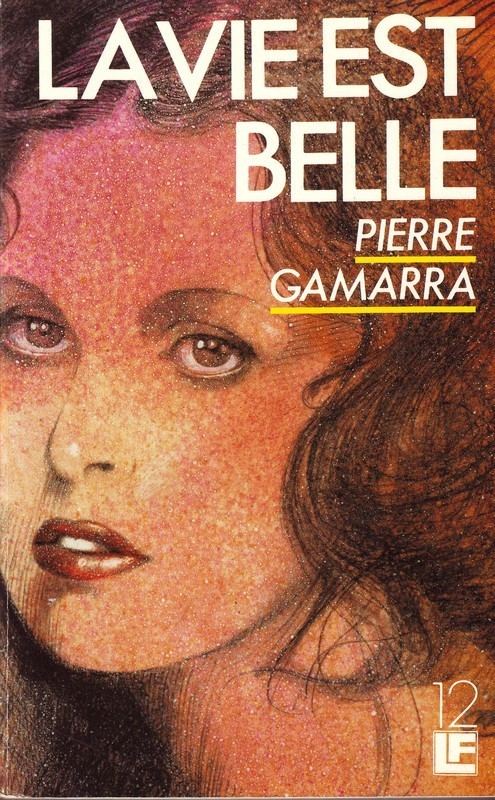 | ||
Born Pierre Albert Gamarra10 July 1919Toulouse, France ( 1919-07-10 ) Notable works La Maison de feu (1948)Le Maitre d'ecole (1955)La Mandarine et le Mandarin (1970)Mon cartable Notable awards Helene Vacaresco Prize for Poetry 1943National Council of the Resistance Prize 1944Veillon International Grand Prize 1948Literature for the Youth Prize 1961Society of Men of Letters (SGDL) Grand Prize 1985 Died May 20, 2009, Argenteuil, France | ||
Mon cartable de pierre gamarra
Pierre Gamarra ([pjɛʁ gamaˈʁa]; 10 July 1919 – 20 May 2009) was a French poet, novelist and literary critic, a long time chief editor and director of the literary magazine Europe.
Gamarra is best known for his poems and novels for the youth and for narrative and poetical works deeply rooted in his native region of Midi-Pyrénées.
Contents
- Mon cartable de pierre gamarra
- Poesie mon ecole de pierre gamarra
- Life
- Selection of works
- Fables collections
- Poetry collections
- CD
- Adaptations
- Novels
- Short stories
- About Pierre Gamarra
- Book reviews in English
- Literary journals special issues
- Interviews
- Homages
- References
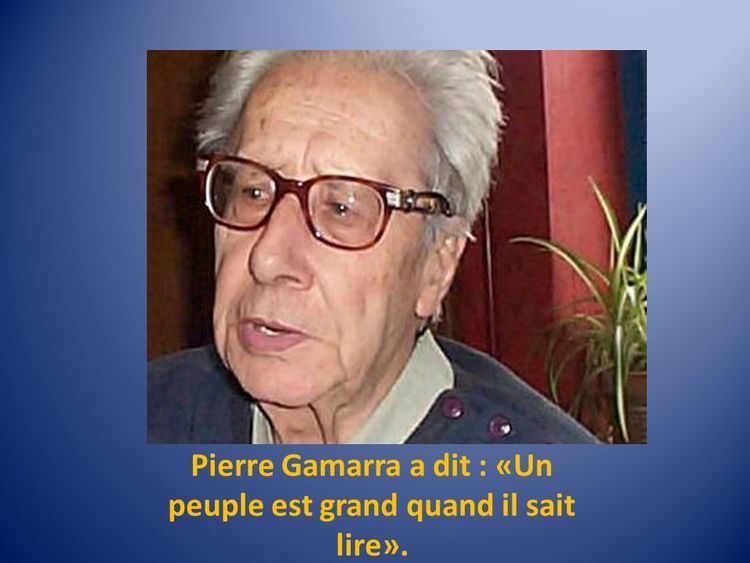
Poesie mon ecole de pierre gamarra
Life

Pierre Gamarra was born in Toulouse on July 10, 1919. From 1938 until 1940, he was a teacher in the South of France. During the German Occupation, he joined various Resistance groups in Toulouse, involved in the writing and distributing of clandestine publications. This led him to a career as a journalist, and then, more specifically both as a writer and a literary journalist.
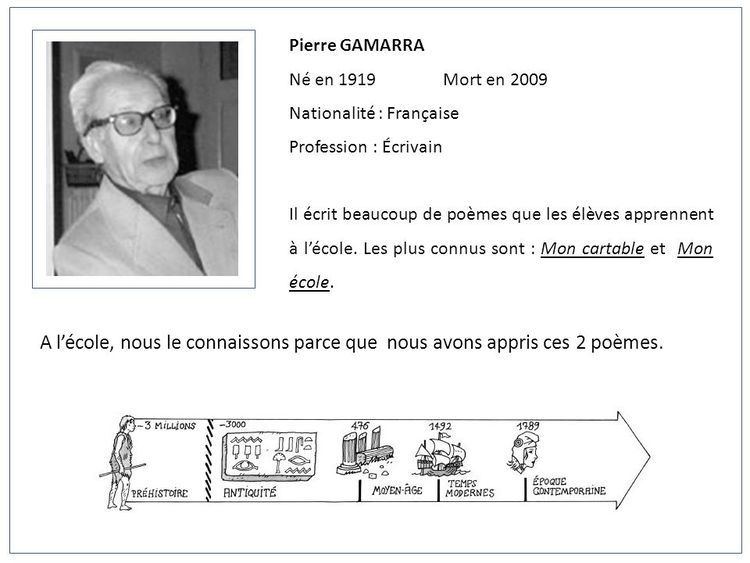
In 1948, Pierre Gamarra received the first Charles-Veillon International Grand Prize in Lausanne for his first novel, La Maison de feu. Members of the 1948 Veillon Prize jury included writers André Chamson, Vercors, Franz Hellens and Louis Guilloux. The novel is described in Books Abroad as “A beautifully written tale of humble life, which Philippe and Jammes would have liked“.

From 1945 to 1951, he worked as a journalist in Toulouse. In 1951, Louis Aragon, Jean Cassou and André Chamson offered him a position in Paris as editor-in-chief of the literary magazine Europe. He occupied this position until 1974, when he became director of the magazine. Under Pierre Gamarra's direction, Europe continued the project initiated in 1923 by Romain Rolland and a group of writers. For more than 50 years, Pierre Gamarra also contributed to most of the magazines's issues with a book review column named The Typewriter which shows the same international curiosity.
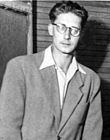
Most of his novels take place in his native South-West of France: he wrote a novel trilogy based on the history of Toulouse and various novels set in that town, along the Garonne or in the Pyrenees.
John L. Brown, in World Literature Today, writes that Pierre Gamarra’s descriptions of Toulouse, its people and its region were “masterly”, “skillfully and poetically” composed “with a vibrant lyricism” and that:
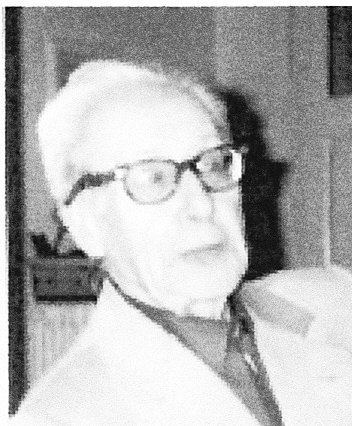
Few contemporary French novelists can communicate a feeling for place, melding poetry and realism, myth and history, more movingly and convincingly than Pierre Gamarra.
Pierre Gamarra is also the author of The Midnight Roosters, a novel set in Aveyron during the French Revolution. The book was adapted for the French television channel FR3 in 1973. The film, casting Claude Brosset, was shot in the town of Najac.
In 1955, he published one of his best known novels, Le Maître d’école; the book and its sequel La Femme de Simon (1962) received critical praise.
Reviewing his 1957 short stories collection Les Amours du potier, Lois Marie Sutton deems that although war affects the plots of many of “all (those) delightful thirteen stories“, “it is the light-hearted plot that Gamarra maneuvers best“ and that “as in his previous publications, (the author) shows himself to be a master delineator of the life of the average peasant and employee.“
In 1961, Pierre Gamarra received the Prix Jeunesse for L'Aventure du Serpent à Plumes and in 1985, the SGDL Grand Prize for his novel Le Fleuve Palimpseste.
Pierre Gamarra died in Argenteuil on May 20, 2009, leaving a substantial body of work, as yet untranslated into English. The Encyclopædia Britannica sees in him a "delightful practitioner with notable drollery and high technical skills" in the art of children's poetry and children's stories. His poems and fables are well known by French schoolchildren.
Selection of works
In French unless otherwise stated
Fables collections
Poetry collections
CD
Adaptations
Novels
Short stories
Poetry collections
About Pierre Gamarra
In French unless otherwise stated
Book reviews in English
Literary journals special issues
Interviews
Homages
A street in Argenteuil, a school in Montauban and two public libraries (one in Argenteuil, the other in Andrest) are named after Pierre Gamarra.
